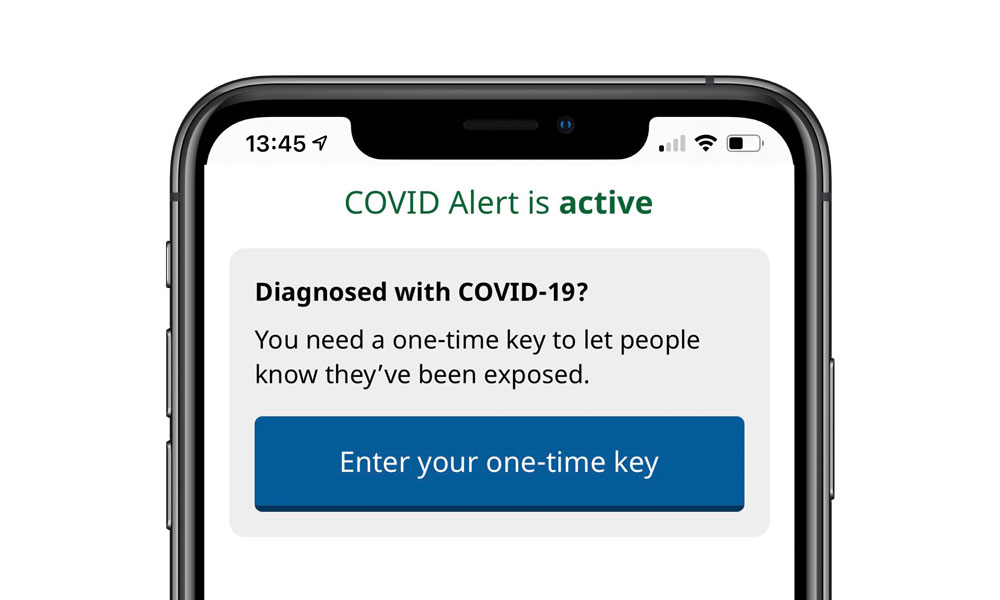There Are Now 20 U.S. States Planning Apple-Google Exposure Notification Apps

Toggle Dark Mode
Last week Canada officially launched North America’s first COVID Exposure Notification app employing the Apple-Google API, following limited testing earlier in the month, and now it looks like some U.S. states may be having a change of heart about using the privacy-focused Exposure Notification system jointly developed by Apple and Google to help combat the spread of COVID-19.
While several European countries enthusiastically embraced the Apple-Google system back in June, it’s been much slower to gain traction in North America. The Canadian province of Alberta, which was the first on the continent to develop any kind of contact tracing app, eschewed the Apple-Google method, leading the Canadian federal government to take up the banner directly, and many U.S. states have been ambivalent about it as well, preferring to develop their now in-house apps that use a more centralized approach.
Of course, it hasn’t been all sunshine and roses in Europe either — France famously pilloried Apple for being unhelpful in that country’s fight against COVID, as it refused to loosen iPhone restrictions to facilitate an approach that would have had the French government tracking the locations of its citizens. The U.K. government also initially planned to adopt a similarly centralized approach until privacy advocates pointed out that performing mass surveillance on its own citizens was actually against the law in that country.
Meanwhile, since the U.S. Federal Government has left contact tracing up to the individual states, many have gone down similarly ill-advised pathways in producing their own contact-tracing apps, with some infamously creating massive privacy issues by processing user location data through third-party services like Foursquare and Google. In fact, Utah ended up shutting down its contact tracing features entirely after most residents of that state pointedly refused to enable location sharing, making its app little more than an informational resource.
More States Coming on Board
According to multiple reports last month, only four U.S. states — Oklahoma, Alabama, South Carolina, and Virginia — had committed to using the Apple-Google API, however it seems that a number of others have had a change of heart and are now at least considering adopting the more reliable and secure Exposure Notifications System (ENS).
According to a new post by Google, there are now 20 states and territories, which collectively make up about 45 percent of the U.S. population, that are “exploring apps based on ENS,” and Google notes that the first set of these apps could roll out in “the coming weeks.”
Further, Google also points out that the Association of Public Health Laboratories has announced that it will be hosting a centralized server for all U.S. states who are using apps based on ENS, which would allow users to receive alerts even when they travel outside of their home state.
The Google announcement notes that ENS is being used in 16 countries and regions around the world, although it doesn’t go into further detail on which ones, nor does it list which U.S. states are actually preparing ENS-based apps. As of last month, at least 16 states — California, Colorado, Connecticut, Delaware, Georgia, Idaho, Indiana, Iowa, Louisiana, Maryland, Montana, New Hampshire, New Mexico, Tennessee, Texas, and Vermont — had explicitly said that they had no plans to create a contact tracing app at all, while North Dakota, South Dakota, Wyoming, Rhode Island, and Utah had either already developed or were planning to develop their own contact tracing apps based on technologies other than ENS.
Of course, that still leaves a silent majority of states who haven’t announced any plans either way, so it’s entirely possible that Google’s 20 states are entirely new players at the table, rather than those who have already either dismissed contact tracing entirely or gone their own way. Google also notes that its number includes U.S. territories, which would include Puerto Rico, Guam, and the U.S. Virgin Islands.
Last month the Linux Foundation also announced that it would be making it easier for health agencies to adopt the Apple-Google ENS by spearheading the release of open source versions of Canada and Ireland’s Exposure Notification apps, as well as creating a repository to which other developers and public health authorities could contribute, which is likely also spurring more U.S. states to get on board.
The Exposure Notification API Improves
Google also adds that it has been working with Apple to make improvements to the Exposure Notification API since it first launched in May, providing more flexibility for public health authorities to determine the level of risk from an exposure, better Bluetooth calibration for more accurate proximity detection, and more transparency when using the ENS API on Android devices.
More significantly, Apple and Google have also now expanded the API to support interoperability between countries — something that Switzerland was working on with Latvia, Germany, and Estonia in order to be able to loosen travel restrictions between their countries. Since the U.S. will be deploying apps on a state-by-state basis, the same technology will likely also be used to help those regional COVID ENS apps talk to each other as well.
In addition, Google has published several more resources to help public health authorities and their developer partners build out their infrastructure to support the apps and the ENS API, including help in building servers to handle the verification of test results for users and health agencies who report themselves as positive for COVID-19, as well as how to properly monitor how well the system is working in the face of de-identified and anonymous user data.






